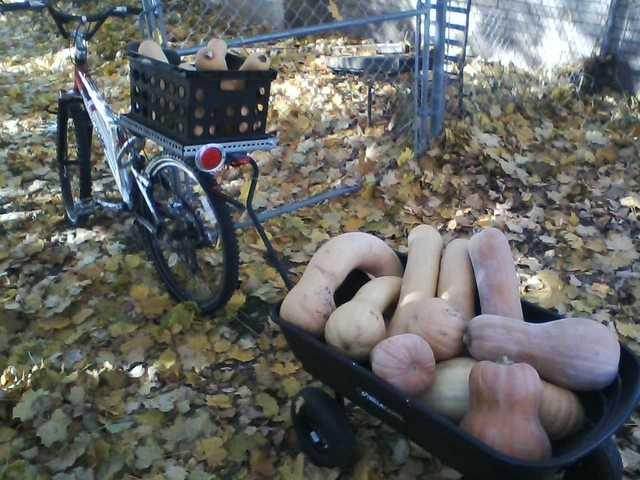
 1
1




Joseph Lofthouse wrote:A year ago, I made a cross between a couple of tomato varieties Yellow Pear, and my earliest potato-leaved variety.
Xisca - pics! Dry subtropical Mediterranean - My project
However loud I tell it, this is never a truth, only my experience...




Xisca Nicolas wrote:
- Why irrigating at night would make you irrigate double?
Moderator, Treatment Free Beekeepers group on Facebook.
https://www.facebook.com/groups/treatmentfreebeekeepers/









Xisca - pics! Dry subtropical Mediterranean - My project
However loud I tell it, this is never a truth, only my experience...

 4
4






 5
5





 7
7




![Filename: winter-peas.jpg
Description: Winter peas are doing great. [Thumbnail for winter-peas.jpg]](/t/57161/a/58083/winter-peas.jpg)
![Filename: winter-lentils.jpg
Description: Winter lentils are thriving [Thumbnail for winter-lentils.jpg]](/t/57161/a/58084/winter-lentils.jpg)
![Filename: winter-carrots.jpg
Description: So far, the carrots are winter hardy. Mild winter so far. [Thumbnail for winter-carrots.jpg]](/t/57161/a/58085/winter-carrots.jpg)
![Filename: winter-not-barley.jpg
Description: Barley isn't doing very well. [Thumbnail for winter-not-barley.jpg]](/t/57161/a/58086/winter-not-barley.jpg)
![Filename: winter-favas.jpg
Description: Some favas are completely dead. Others are doing OK. I don't expect them to survive till spring, but one of these years they might. [Thumbnail for winter-favas.jpg]](/t/57161/a/58087/winter-favas.jpg)
![Filename: winter-garbanzos.jpg
Description: At least some of the garbanzos are thriving. [Thumbnail for winter-garbanzos.jpg]](/t/57161/a/58088/winter-garbanzos.jpg)
![Filename: winter-oats-sorta.jpg
Description: The oats are dying off in patches depending on snow cover. [Thumbnail for winter-oats-sorta.jpg]](/t/57161/a/58089/winter-oats-sorta.jpg)
![Filename: winter-clary-sage.jpg
Description: Clary sage (chia) is going wonderful. [Thumbnail for winter-clary-sage.jpg]](/t/57161/a/58090/winter-clary-sage.jpg)
![Filename: winter-mint.jpg
Description: Several kinds of mints are thriving. [Thumbnail for winter-mint.jpg]](/t/57161/a/58091/winter-mint.jpg)
![Filename: winter-sorrel.jpg
Description: I have been eating sorrel. What a great winter crop! [Thumbnail for winter-sorrel.jpg]](/t/57161/a/58092/winter-sorrel.jpg)
![Filename: winter-poppies.jpg
Description: The poppies germinated while snow was on the ground, so they are very leggy after the snow melted. [Thumbnail for winter-poppies.jpg]](/t/57161/a/58093/winter-poppies.jpg)




Xisca - pics! Dry subtropical Mediterranean - My project
However loud I tell it, this is never a truth, only my experience...

 1
1




![Filename: 0203181620-00.jpg
Description: Seed swap [Thumbnail for 0203181620-00.jpg]](/t/57161/a/58120/0203181620-00.jpg)

 2
2




Ask me about food.
How Permies.com Works (lots of useful links)


 2
2




Julia Winter wrote:Wait, clary sage is chia? I have essential oil of clary sage, didn't know those were the same plant.




“The most important decision we make is whether we believe we live in a friendly or hostile universe.”― Albert Einstein









 3
3




Julia Winter wrote:Wait, clary sage is chia? I have essential oil of clary sage, didn't know those were the same plant.
Xisca - pics! Dry subtropical Mediterranean - My project
However loud I tell it, this is never a truth, only my experience...






 10
10





 5
5




Joseph Lofthouse wrote:
I recently had the pleasure of doing a podcast with Paul and Jocelyn.
Part 1. https://permies.com/t/77746/podcast-Joseph-Lofthouse-plant-breeding











 6
6




![Filename: garlic-stratification.jpg
Description: Germinating pollinated garlic seeds. [Thumbnail for garlic-stratification.jpg]](/t/57161/a/59224/garlic-stratification.jpg)










 7
7




![Filename: rooting-interlaken-grape-cuttings.jpg
Description: rooting grape cuttings [Thumbnail for rooting-interlaken-grape-cuttings.jpg]](/t/57161/a/59281/rooting-interlaken-grape-cuttings.jpg)

 4
4




![Filename: crocus-2018.jpg
Description: Crocus: The very firstest flower. [Thumbnail for crocus-2018.jpg]](/t/57161/a/59543/crocus-2018.jpg)

 3
3




 1
1





 1
1





 2
2




![Filename: pheasant.jpg
Description: Garden guest [Thumbnail for pheasant.jpg]](/t/57161/a/59777/pheasant.jpg)
 1
1












 4
4




![Filename: greenhouse-2018-05-07_640.jpg
Description: The tomatoes are thriving in the greenhouse [Thumbnail for greenhouse-2018-05-07_640.jpg]](/t/57161/a/60702/greenhouse-2018-05-07_640.jpg)
![Filename: pennellii-f2-flower-2018-05-07.jpg
Description: The promiscuous pollinating tomato project is progressed wonderfully [Thumbnail for pennellii-f2-flower-2018-05-07.jpg]](/t/57161/a/60703/pennellii-f2-flower-2018-05-07.jpg)
![Filename: corneliomuleri-x-habrochaites_640.jpg
Description: Perhaps an unexpected interspecies hybrid? [Thumbnail for corneliomuleri-x-habrochaites_640.jpg]](/t/57161/a/60704/corneliomuleri-x-habrochaites_640.jpg)
![Filename: fern-x-habrochaites-2018-04-29_640.jpg
Description: I'm loving the interspecies tomato hybrids [Thumbnail for fern-x-habrochaites-2018-04-29_640.jpg]](/t/57161/a/60705/fern-x-habrochaites-2018-04-29_640.jpg)

 2
2









 4
4














 2
2









 2
2





 1
1





|
A sonic boom would certainly ruin a giant souffle. But this tiny ad would protect it:
The new purple deck of permaculture playing cards
https://www.kickstarter.com/projects/paulwheaton/garden-cards
|








